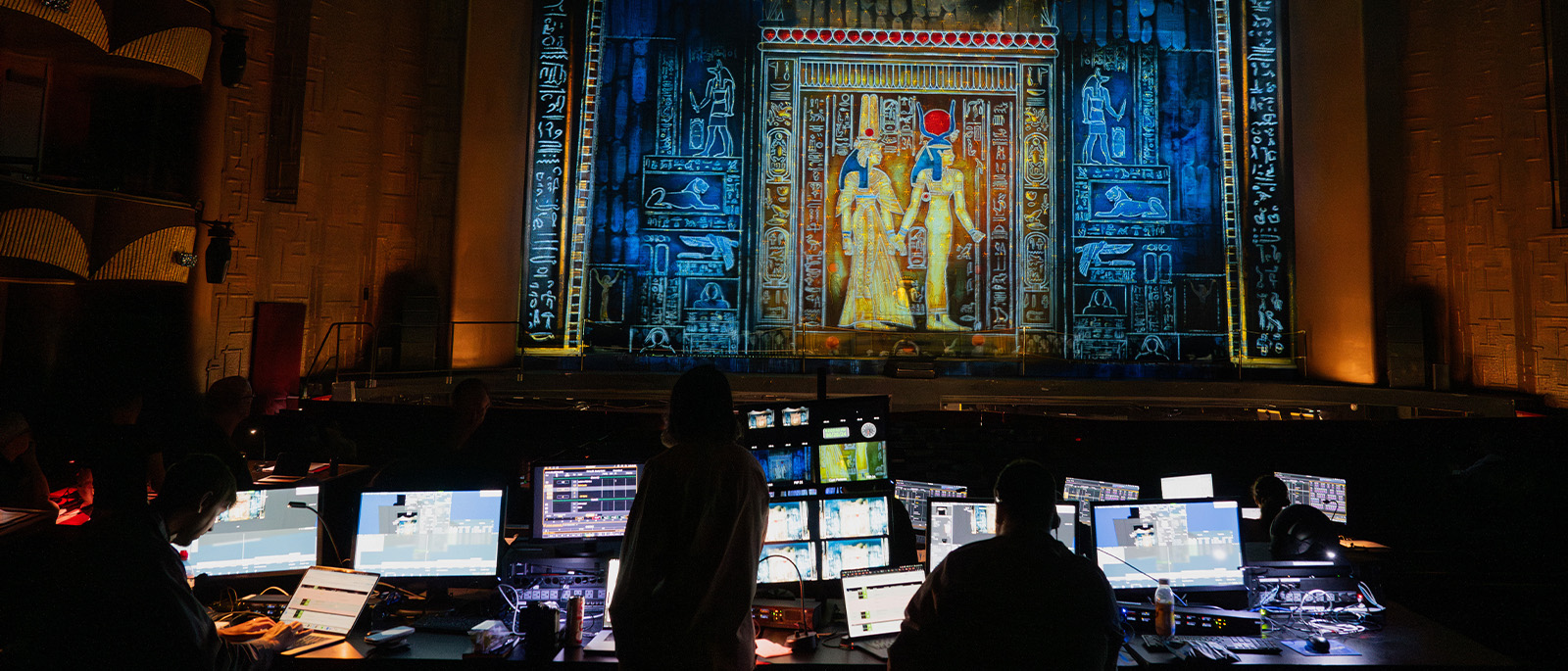
The Art of Projection
One of today’s most innovative design studios, 59 has earned Tony and Olivier Awards for its work on Broadway and in the West End, created interactive video installations for the world’s leading museums, and contributed to such blockbuster events as the opening ceremony of the 2012 Summer Olympics. Just as impressive is the team’s track record at the Met, where they have designed video and projections for five company premieres (including John Adams’s Doctor Atomic and Nico Muhly’s Two Boys) and a pair of star-studded galas, and, most recently, created the archival animation that opened last November’s Puccini at the Met: A Centenary Celebration. Their work on Verdi’s Aida is an essential element of the new staging, and they will return in September for the premiere of Mason Bates’s The Amazing Adventures of Kavalier & Clay. Mark Grimmer, the company’s co-founder, recently spoke to the Met’s Matt Dobkin about “painting with light” on the Met stage.
Take me back to 59’s first Met production, Philip Glass’s Satyagraha in 2008.
We had staged the show at English National Opera the previous year, but nothing compares to the vastness of the Met. We were relative newcomers to opera, so we came with genuine wonder at how the whole thing worked. From the very beginning, the Met put us at ease and allowed us to play, so it quickly became a place where we felt empowered to push our practice forward.
Your work is so wide-ranging. Where does opera fit in?
Opera remains one of the purist mediums that we work in, in the sense that it’s live and the contact with the audience is really direct and immediate. We love that! And in opera, we’re usually attached to a project several years in advance, so we get the opportunity to take time to really develop a show. Paradoxically, the actual rehearsal period is incredibly short, and that can be a challenge when shows have lots of moving parts.
What is 59’s role in this new Aida?
We’re collaborating closely with the set designer, Christine Jones, and the lighting designer, Kevin Adams, to blur the lines between physical scenery and lighting. Audiences will see stone carvings and statues appear from solid walls, hieroglyphs draw themselves across the set, ghosts appear and disappear. It’s almost like painting with light, and if we get it right, the audience won’t be able to tell whether they’re looking at scenery, projections, or lighting.
Do you approach repertory staples like Aida differently from contemporary operas?
Every opera we work on feels different. With the canonical pieces, audiences often have a long relationship with the work and may need time to warm up to productions that use new technology or digital design. For Aida, it’s exciting to have a team who deeply understands this medium and has created a production that blends the traditional and the modern in a really interesting way. Hopefully, it will all coalesce into a world you can lose yourself in.